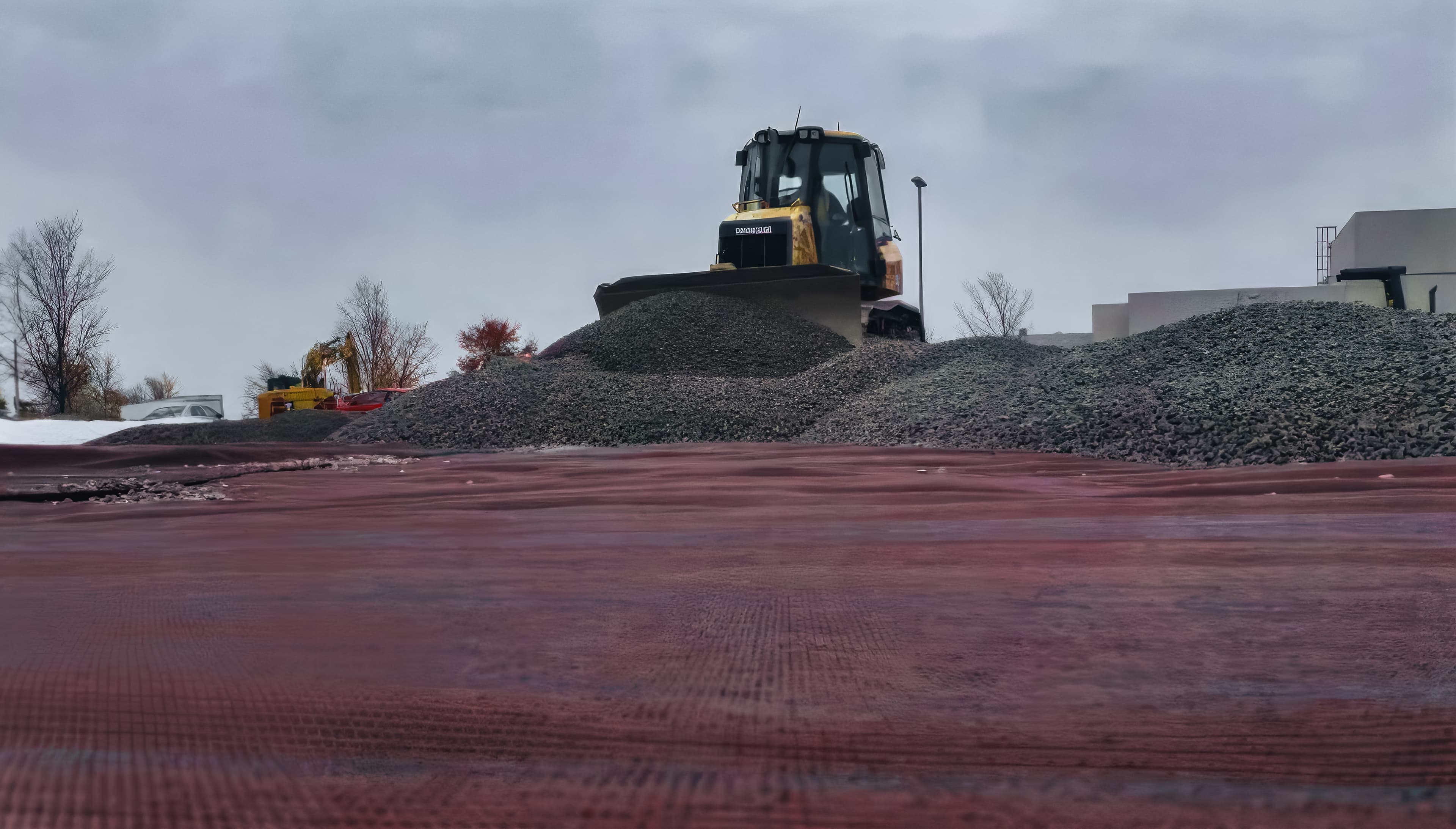Overview
In May 2012, the IMAX parking lot in Mississauga, Ontario, was selected as a demonstration site for the Ontario Ministry of Environment's Innovative Technology Program. This program showcases various Low Impact Development Technologies (LID). Low Impact Development is a progressive approach to stormwater management, aiming to replicate the natural water balance by managing rainfall at its source with techniques like permeable pavers. The objective of these initiatives is to safeguard and enhance water quality in the Great Lakes, a vital drinking water source for 80 percent of Ontario's population.
Challenge
The project involved excavating the existing pavement system and installing subdrains. These subdrains were then encased in MIRAFI® 160N nonwoven geotextile. Following this, the sorptive tank system was implemented, along with the MIRAFI RS380i, a 0.75 in (19 mm) clear drainage layer, as well as the curb and bioswale system. The final step was the installation of permeable pavers.
Solution
MIRAFI RS380i was crucial in allowing the designers to preserve the pavement system's integrity without the need for excessive subgrade excavation. Over a decade later, the pavement system is still functioning effectively.


